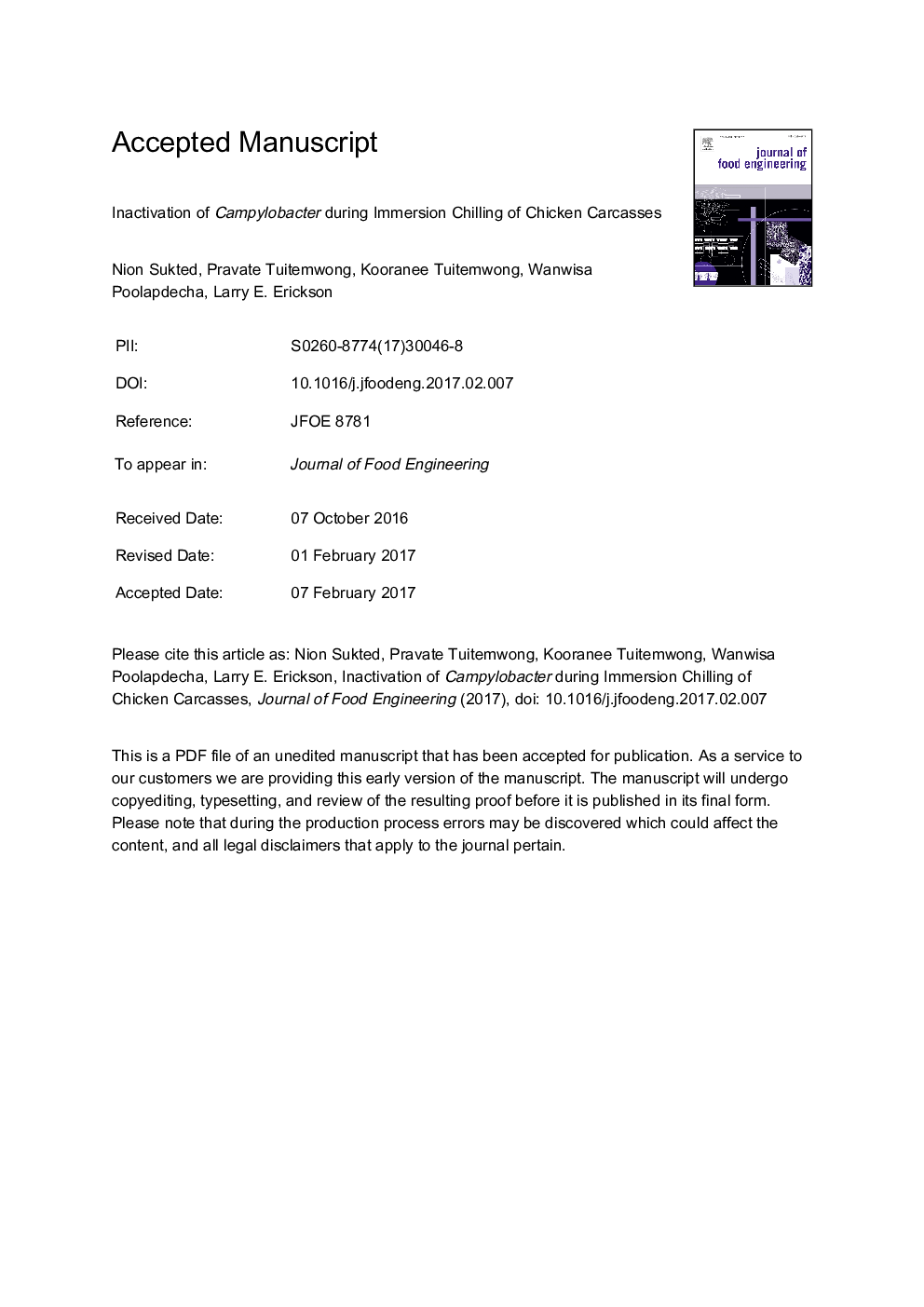| Article ID | Journal | Published Year | Pages | File Type |
|---|---|---|---|---|
| 4909128 | Journal of Food Engineering | 2017 | 27 Pages |
Abstract
Immersion chilling of chicken carcasses is used in many locations to reduce temperature. In some cases chemicals are added to the water to reduce the numbers of Campylobacter and other microbial populations. The addition of chlorine to the chilling water has the potential to reduce Campylobacter numbers significantly. Because of the interest in reducing campylobacteriosis, the chilling process is reviewed with emphasis on successful methods for the reduction of viable Campylobacter populations. A mathematical model of the fate of Campylobacter during the chilling process is presented. Some parameters in the model are estimated based on experimental data from several sources. Experimental results and simulation results show that Campylobacter numbers can be reduced significantly in chillers with three tanks in series and a measurable concentration of free chlorine in the chillers.
Related Topics
Physical Sciences and Engineering
Chemical Engineering
Chemical Engineering (General)
Authors
Nion Sukted, Pravate Tuitemwong, Kooranee Tuitemwong, Wanwisa Poonlapdecha, Larry E. Erickson,
